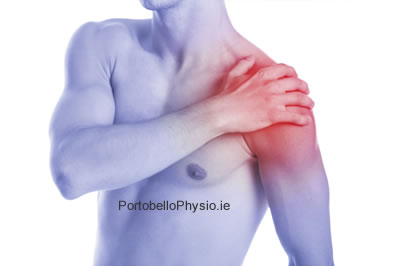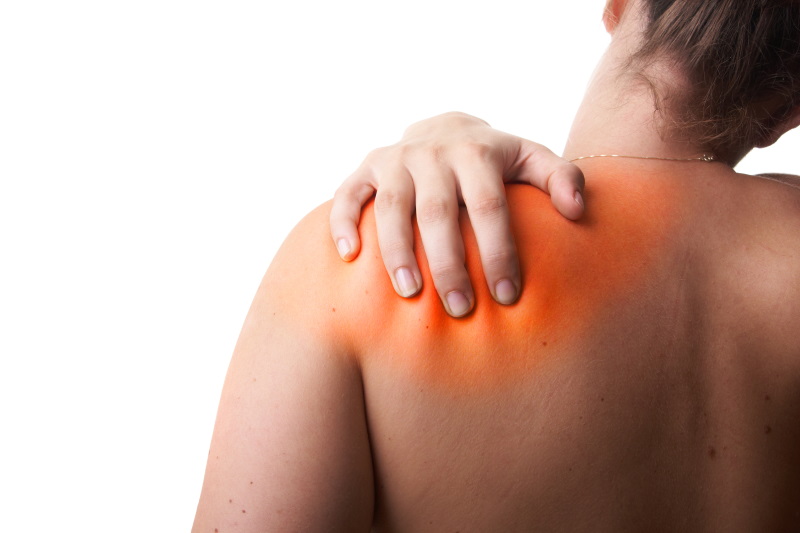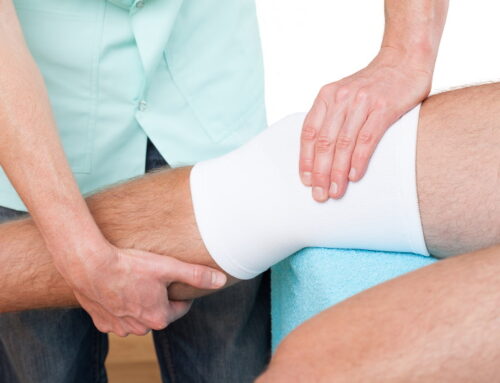According to the HSE, shoulder pain is very common in Ireland, with three people out of every 10 experiencing it at some point. There are many different types of shoulder disorders, and pain is a symptom of the underlying cause, so getting an accurate diagnosis is important before starting treatment.
Frozen shoulder and rotator cuff problems are common in middle aged people; whereas things like acromioclavicular joint trouble and shoulder instability tend to affect younger people, especially those who play contact sports or sport involving repetitive shoulder movements.
It can become a chronic problem if you don’t treat it, with up to 50% of people still having symptoms after 18 months.
Suffering from Shoulder Pain?
You need to seek treatment if you’re in pain and have any of the following problems:
- Persistent pain for more than three days
- Shoulder pain even when you’re resting
- Inability to carry objects or use/raise your arm
- Injury that causes deformity of the joint
- Swelling or bruising around the shoulder joint
The treatment of shoulder pain will depend completely on the root cause; this is why an accurate diagnosis will determine your path to healing. You need to get medical advice before proceeding with any rehabilitative program for your shoulder.

The pain can be the result of an injury to any of the ligaments, bursae or tendons that surround the shoulder joint; or to the cartilage and labrum. The way the shoulder is designed is often said to ‘sacrifice stability for mobility’ and such a mobile joint is always at risk.
Common injuries of the shoulder can cause inflammation of the bursae (bursitis) or tendons (tendonitis or tendonopathy) and result in rotator cuff dysfunction as well as instability and frozen shoulder.
Pain may also be caused by diseases or conditions involving the joint (including arthritis), the soft tissues and bones surrounding the shoulder, or the nerves that supply sensation to the shoulder area.
Some of the most frequent conditions are:
Shoulder Dislocation
This looks quite scary, and some people suffer from it regularly if their shoulder is prone to ‘popping out’. A dislocation occurs when the top of the arm bone becomes disconnected from the scapula.
Shoulder Instability
Instability is a problem that causes a loose joint; it may have developed over time, or can be the result of a traumatic injury.
A-C joint injuries
A-C joint injuries are the result of a disruption to the ligaments that support the acromioclavicular joint. It’s not the same as a dislocation though.
Torn rotator cuff
When the tendons of the rotator cuff spate from the bone. This is a really painful injury, and sometimes requires surgery.
Frozen Shoulder
Also known as ‘adhesive capsulitis,’ this condition makes your shoulder incredibly stiff and motion is drastically reduced- it gets ‘frozen’ in place. Physiotherapy and stretching are the key aspects to treating this.
Bursitis | Rotator Cuff | Bicipital Tendonitis
The most common diagnosis in patients with shoulder pain is bursitis or tendonitis of the rotator cuff.
Calcific Tendonitis
Calcific tendonitis is a build-up of calcium deposits within a tendon; often the rotator cuff tendons. Treatment will depend on the extent of symptoms.
Labral Tear
There are several patterns of a torn labrum and the type of treatment depends on the specific injury.
SLAP Lesion
The SLAP lesion is also a type of labral tear. The most common cause is a fall onto an outstretched hand stuck out to try to save yourself, hence the name.
Osteoarthritis
This condition affects the joints, causing damage to the cartilage and swelling of the tissues around the joints (synovitis). It can also affect the acromioclavicular joint at the top of the shoulder or the glenohumeral joint (main ball-and-socket joint of the shoulder)
Biceps Tendon Rupture
A proximal biceps tendon rupture occurs when the tendon of the biceps muscle ruptures near the joint.
Initial treatment
Rest: In order to allow the inflammation to subside, you’ll need to rest the joint- but not for too long as a prolonged immobilisation can cause a frozen shoulder.
Ice and Heat: Ice is useful for the first few days after injury as it helps take the inflammation down. After that, heat treatment will help with pain levels.
Stretching: Stretching the muscles and tendons that surround the joint can help with some causes of shoulder pain – but you don’t want to risk further injury, so these should only be done under the supervision of your physiotherapist once a correct diagnosis has been made.
Physiotherapy: This is one of the most important treatments for almost every orthopaedic conditions. Your Portobello physiotherapists will design a program based on your shoulder issue incorporating different modalities to increase strength, regain mobility, and help get you back to normal.
Anti-Inflammatory Medication: Nonsteroidal anti-inflammatory pain medications, commonly referred to as NSAIDs, are some of the most commonly prescribed medications for shoulder pain.
How Strengthening Exercises Help
Shoulder rehabilitation focuses on two aspects of shoulder motion: flexibility and strength. Without adequate range of motion, you’ll be very limited in what you can do; so the goal is to be able to function normally without pain.
It’s also important to strengthen the muscles around the shoulder and not to stress the rotator cuff muscles of the shoulder. These muscles are susceptible to injury and inflammation if the exercises aren’t being done correctly, so your physiotherapist will guide you through the correct form.
Chronic shoulder pain is often a result of repetitive overhead activity, like tennis; certain swimming strokes, etc. and such pain is a result of damage to the rotator cuff muscles.
Rotator Cuff Injury and Physiotherapy
The rotator cuff group is made up of four different muscles; the subscapularis, teres minor, infraspinatus and supraspinatus, which are positioned around the shoulder joint. They’re quite small, and they keep the shoulder joint stable during movements of the arm by keeping the ‘ball’ in the ‘socket’.
Your Portobello Physiotherapist can introduce you to some very specific exercises for strengthening the rotator cuff. Depending on the nature of your injury, you can begin with basic exercises and gradually add in intermediate and advanced ones as your shoulder strength improves as well as increasing the frequency and duration as long as they don’t cause or increase pain.
Stretching the Shoulder
In many cases of shoulder pain, stretches are very important part of treatment. Shoulder conditions often involve shoulder stiffness, so stretching exercises can help loosen these muscles that surround the shoulder joint.
The simplest shoulder exercises are pendulum exercises, performed by bending forward to allow your arm to hang down towards the ground. Small circles are made with the hand, allowing momentum to carry the arm around effortlessly.
Some shoulder problems can be caused by poor posture and straining of the muscles of the upper back and neck; so you may also incorporate some simple stretches and exercises for the cervical spine and upper back muscles.
All of the strengthening exercises are designed to gradual build your shoulder up again, gently, so it’s not prone to reinjury.
For more information or to book an appointment to get help with your shoulder pain, call Portobello Physiotherapy Clinic on 01 476 3330.







